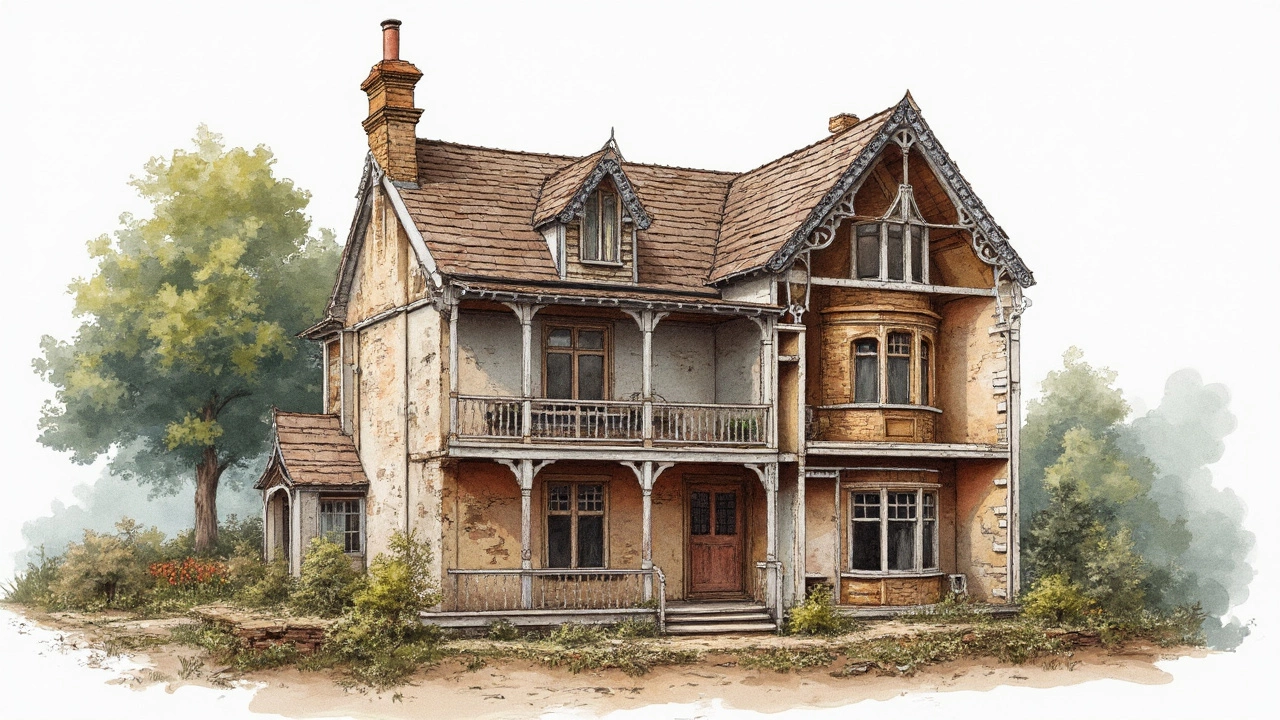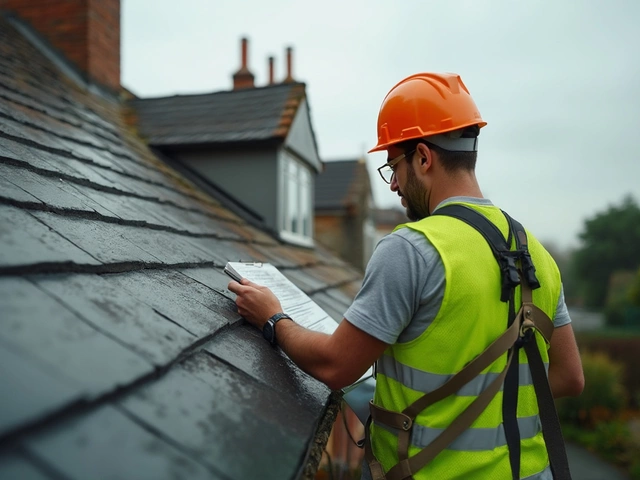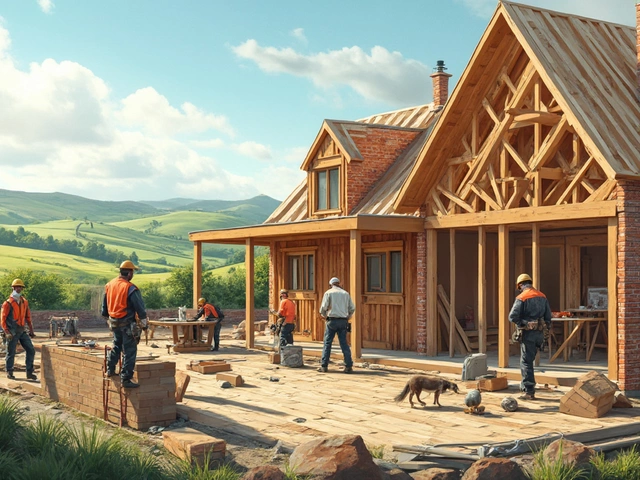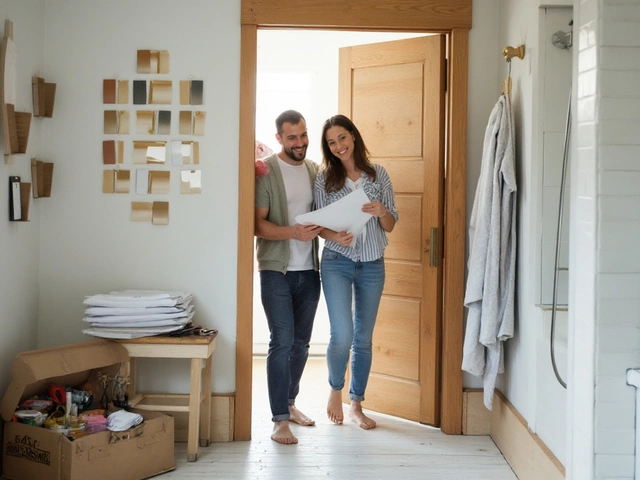You might look at those cracks in your old house and wonder if that’s just part of its charm or a sign of serious trouble. Houses over 100 years old—yup, the ones filled with history and character—often come with their fair share of cracks. Is that normal? Well, let’s say it’s not exactly unusual. But what really matters is understanding why they happen.
First off, houses settle. Literally. Over the years, and especially over a century, the ground beneath your home can shift or compact, causing the structure to move ever so slightly. Sometimes, this results in cracks. It sounds intense, but it's a natural process and not always a reason to panic.
It's crucial to distinguish between different types of cracks. Some are harmless, merely the house's way of showing its age. Others, however, might signal underlying problems. Knowing the difference can save you time and money. Let's navigate through the usual suspects causing these cracks to give you peace of mind—or a nudge to call in the experts.
- Understanding House Settling
- Common Causes of Cracks
- When to Worry
- Preventive Maintenance Tips
- Old Houses vs. New Builds
Understanding House Settling
When it comes to living in a 100-year-old house, noticing a few cracks isn't out of the ordinary. One of the main reasons these lovely old structures develop cracks is due to the process known as house settling. It's a bit like your home getting comfortable on the land it's been built on!
So, what exactly is house settling? Well, all houses settle, but it’s especially noticeable in 100-year-old houses. Over time, the earth underneath can shift slightly, impacted by things like erosion, moisture levels, or even nearby construction. This slow movement can lead to minor adjustments in the house's structure, and sometimes, voila, cracks appear.
"No matter how well a house is built, it will experience some degree of settling over its lifetime," remarks John Llewellyn, a structural engineer with over 25 years in the industry.
Why Do Houses Settle?
Settling often happens because of soil properties. For example, clay soils expand when wet and contract when dry, creating shifts in the foundation. Meanwhile, sandy soils can lead to less dramatic but still noticeable settling. Here are a few key factors that lead to house settling:
- Soil Compaction: The soil was probably compacted over time, causing the building to slightly sink.
- Moisture Levels: Water can drastically affect soil, especially if there’s poor drainage.
- Temperature Changes: Expansion and contraction due to temperature fluctuations can lead to tiny shifts.
How to Tell if Settling is Normal
It’s crucial to identify which cracks are "normal" and which might indicate serious issues. Generally, hairline cracks are common and expected. Wider cracks or those accompanied by sticking doors or sloping floors might be a reason to call in an expert.
As a rule of thumb, if you're concerned about cracks being signs of something bigger, contacting a structural engineer could be worth the peace of mind. They can offer actionable advice tailored to your house’s unique situation.
Common Causes of Cracks
When you're dealing with a 100-year-old house, cracks can be a result of different factors. Let’s break down the main culprits to give you a better picture of what's happening and why.
1. Settling and Foundation Shifts
The ground beneath the house isn’t always as stable as we’d like. Over time, soil can shift, causing the foundation to move a bit. This is especially common if the house is built on clay soil, which expands and contracts with weather changes. While minor shifting is normal, larger cracks might need checking out by a pro.
2. Temperature and Humidity Changes
The materials in a house can expand and contract with temperature shifts. Homes in areas with drastic climate changes might show more cracking in the walls and ceilings. It’s like how your wood floors might creak more in winter—same principle, different materials.
3. Poor Construction Practices
No house is perfect, especially those built a century ago when building regulations weren’t as strict. Some older homes might not have the necessary reinforcements that prevent cracking, or they might have been constructed with materials that weren’t up to today’s standards.
4. Water Damage
Water is a house’s worst enemy. Whether it's from improper drainage, leaks, or heavy rainfall, water can seep into the foundation or walls, weakening them and leading to cracks. Keeping gutters clean and addressing leaks promptly can help stave off this issue.
- Ensure gutter systems are directing water away from the foundation.
- Check for signs of leaks in basements or crawl spaces.
- Consider installing a sump pump if standing water is a concern.
Not all cracks are created equal, so it's good to know the usual suspects. Keeping an eye on these factors can help you maintain the charm of your historic home without the worry of nasty surprises.
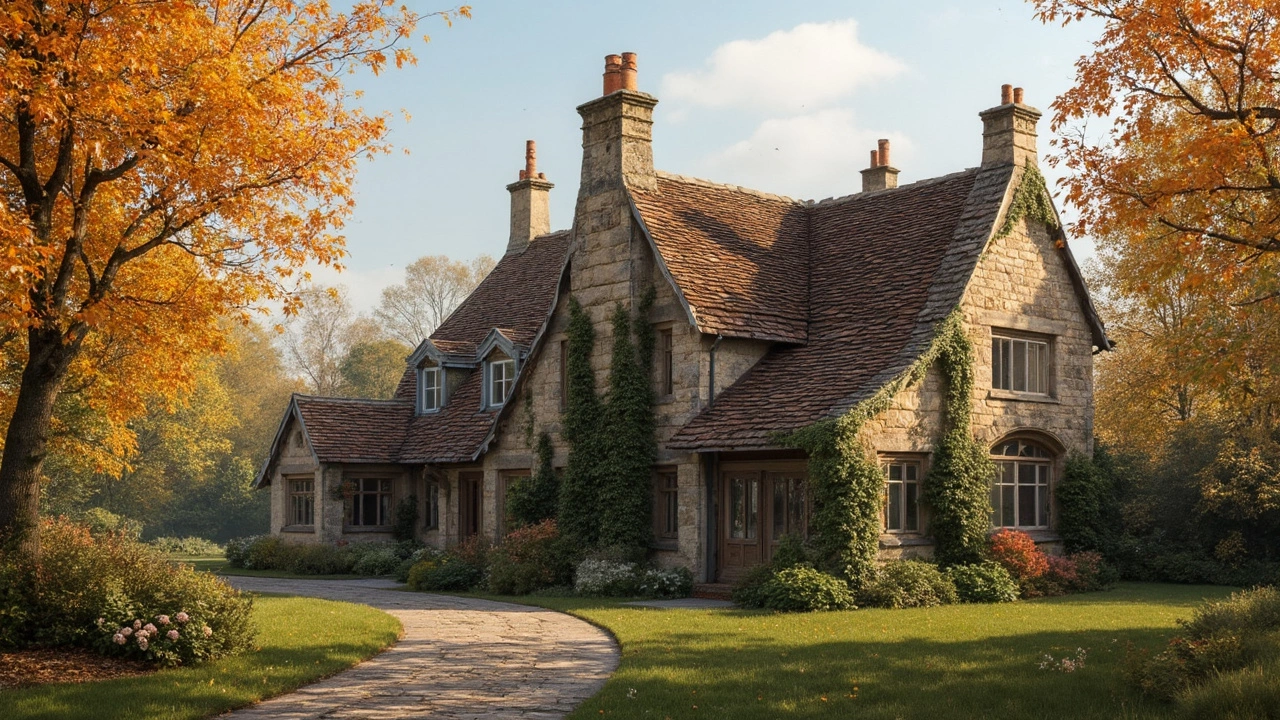
When to Worry
So, you've spotted some cracks in your 100-year-old house. How do you know if it's time to sound the alarm? Not all cracks are the same, and knowing when to be concerned can save you a lot of stress and cash.
Look for Patterns
Check the direction and width of the cracks. Vertical or diagonal cracks smaller than a quarter-inch wide are usually harmless and often caused by normal settling. However, cracks bigger than a half-inch or horizontal ones can be a sign of serious structural issues or foundation problems. Keep an eye out for these patterns, and call in a pro if you spot any of these.
Doors and Windows Acting Up
If doors and windows have started sticking, jamming, or misaligning, it's time to pay attention. These signs often accompany more severe cracking issues. It might indicate shifts in the house’s structure that need immediate attention from a structural engineer.
Water Seepage
Water is not your friend when it comes to buildings. If you notice water stains around the cracks, or if they tend to widen after heavy rain, this could be pointing to leaks or drainage issues. Acting quickly is crucial to prevent water damage from deteriorating the home's foundation.
Uneven Floors
Uneven or sloping floors can be a major red flag when paired with significant cracks. This suggests foundation movement, which is something you don't want to ignore. Have a professional inspection done if your floors start to resemble small roller coasters.
| Sign | Severity |
|---|---|
| Vertical/diagonal cracks under 1/4 inch | Low |
| Horizontal cracks or over 1/2 inch wide | High |
| Sticking doors/windows | Medium to High |
| Water seepage | High |
| Uneven floors | High |
Knowing when to be concerned about the state of your house is part intuition and part awareness of the signs. When in doubt, it's always better to contact a professional for an assessment. After all, a 100-year-old house deserves any care and attention it can get.
Preventive Maintenance Tips
Keeping your 100-year-old house in good shape doesn't have to be daunting. Regular maintenance is key to preventing and minimizing cracks. Here are some practical tips to keep things in check.
1. Keep Moisture in Check
Water is often a home’s biggest enemy. Make sure gutters and downspouts are clear and direct water away from the foundation. You don’t want puddles accumulating next to your house.
2. Monitor Structural Changes
It’s important to stay ahead of noticeable changes. A bi-annual walk-around can help you spot issues before they escalate. If you observe new cracks or ones getting larger, consider bringing in a professional for an evaluation.
3. Regular Foundation Checks
Your foundation is the backbone of the house, so you’ll want it healthy. Look out for signs of shifting or crumbling mortar. You might even want to seal it every so often for extra protection.
4. Tree Roots Management
Large trees close to the home can cause problems with their roots. They can sneak into foundations or drainage systems. It’s worth trimming them back or considering root barriers.
5. Seasonal Maintenance
Before winter, make sure to inspect the house for potential weaknesses that snow or ice might exploit. Summer is a good time to conduct repairs.
As home inspector John Matthews says,
“Old homes are like fine wine, they improve with care.”Essential maintenance helps prolong their charm.
Why It Matters
An ounce of prevention is worth a pound of cure. Regular maintenance isn’t just about aesthetics—it can extend the life of your home and preserve its value.
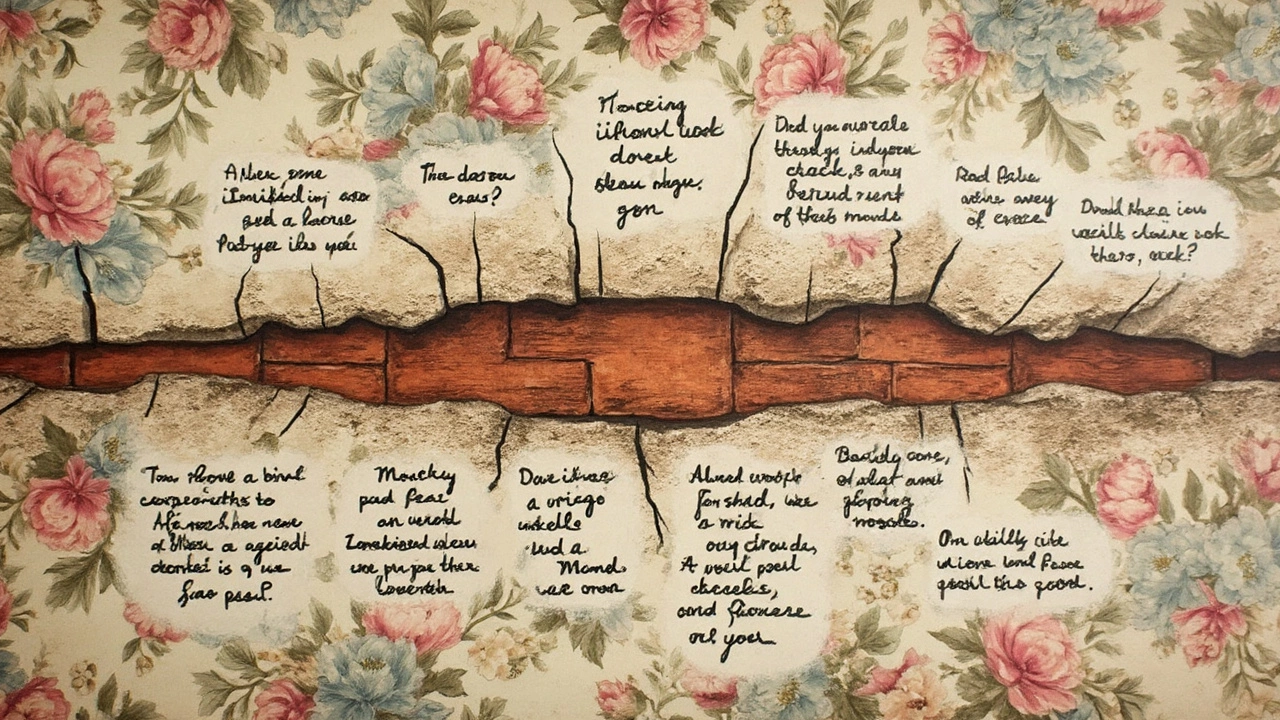
Old Houses vs. New Builds
When you’re considering housing options, comparing old houses to new builds is like comparing apples to oranges. Each has its pros and cons, with unique quirks and benefits.
Starting with those charming 100-year-old houses, they usually boast craftsmanship that's hard to find in today's market. Many older homes were built using techniques and materials like solid wood framing and natural stone, which have stood the test of time. However, with that age comes the natural wear and tear, including cracks from settling or even dated foundations.
What About New Builds?
On the flip side, new build homes tend to offer modern conveniences and updated amenities. They typically require less immediate maintenance. The building methods have improved over the years with modern materials offering better insulation and energy efficiency.
While cracks shouldn’t be rampant in new builds, even these homes see some settling—though it might not be as extensive as what you’d see in an old house.
Investment and Appreciation
From an investment standpoint, old houses might appreciate in value due to their unique features and location in established neighborhoods. On the other hand, new builds often come with a warranty, giving peace of mind that any structural issues arising in the early years are covered.
Quick Comparison
| Aspect | Old Houses | New Builds |
|---|---|---|
| Craftsmanship | High with unique features | Standardized, modern materials |
| Maintenance | Often more due to age | Typically less initially |
| Energy Efficiency | Lower unless upgraded | Higher with modern standards |
Making the choice between an old house and a new build is largely personal. Think about what you value more: history and character or convenience and modern comfort. Both paths have their own rewards and challenges, just find the one that suits your lifestyle best.

